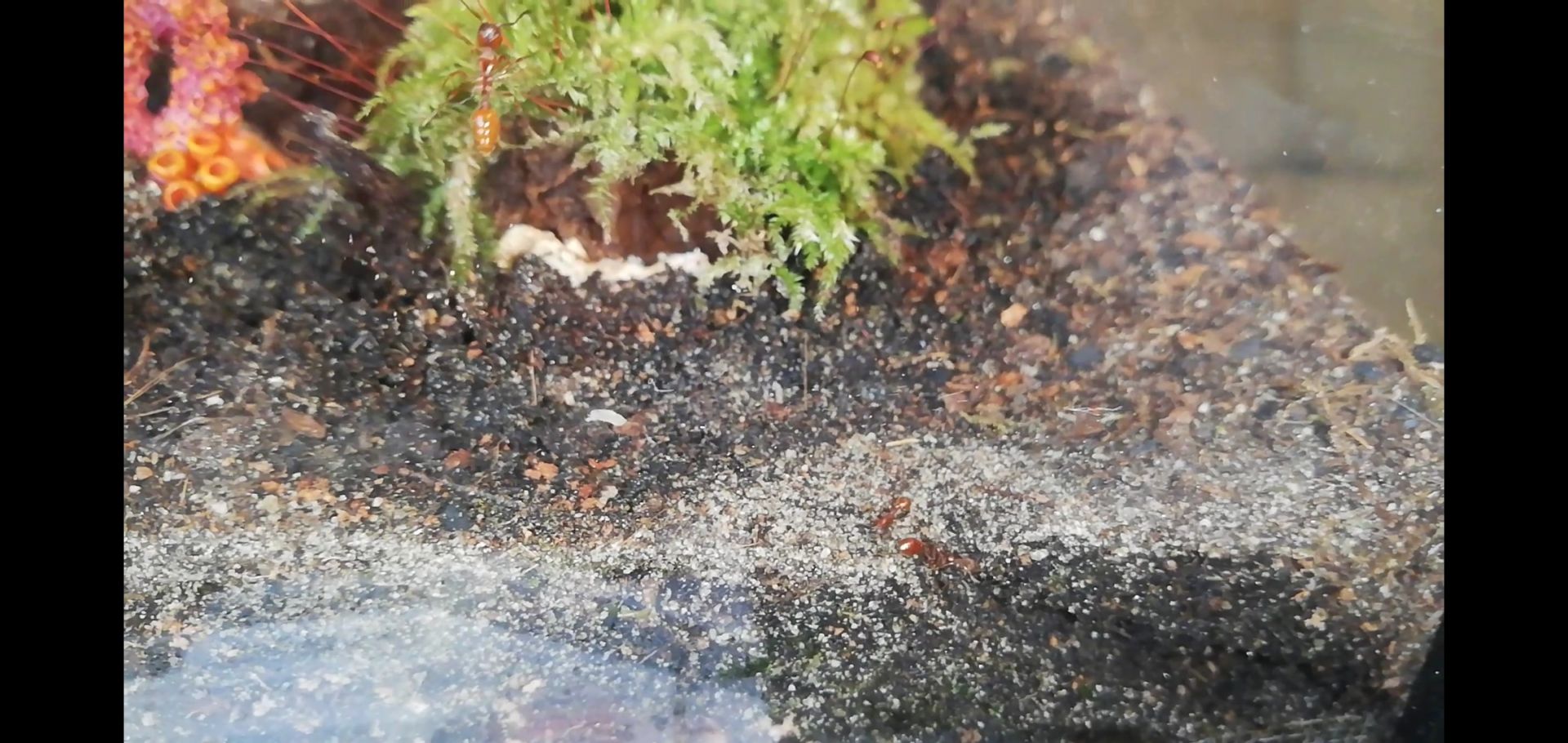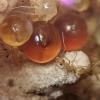
I've noticed an off looking ant with odd behavior and I'm not sure what that's about.
Those are Manica rubida and the worker on the glass looks different from the two on the ground to the right.
It's gaster is more orange and swollen and she is running around and constantly running as high up as she can.
She sprints like she's in a panic.
The gaster might look like she drank sugar water but their gasters usually are not as bright orange and more cone shaped if filled with water.
I observed an ant like this last year and it died after a day of running up on walls constantly. There is no difference in color above or below and it's not just the daylight, I checked for that.
I wonder if that's a parasite housing in the gaster directing the ant to go up high on trees as they sometimes do.
If that's a parasite it never spread out from that one ant that had it in the past.
I might remove this one to keep it quarantined.

















